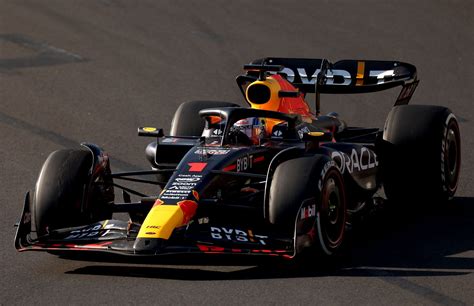is kers still used in f1 - kers f1 weight : 2024-11-02 is kers still used in f1 Driver-operated KERS is set to return in 2026 when the new power unit regulations are introduced. According to the latest FIA draft of the 2026 power unit regulations, a driver-operated KERS-style system .
is kers still used in f1Overview. Siemens has a wide range of IEC low voltage AC induction motors up to 4MW. Our IEC motors provide a high reliability and efficiency, are suitable for all industries and applications, meet all standard requirements and fulfill international and local regulations.
The Chess Lv.100 for Windows 10. Free. In English. V 1.0.0.2. 3.8. (193) Security Status. The Chess Lv.100 for Windows 10 free download. Free Download for PC.
is kers still used in f1In 2010, FIA banned KERS but was reintroduced in 2011 and is now being .The first of these systems to be revealed was the Flybrid. This system weighs 24 kg (53 lbs) and has an energy capacity of 400 kJ after allowing for internal losses. A maximum power boost of 60 kW (81.6 PS, 80.4 HP) for 6.67 seconds is available. The 240 mm (9.4 in) diameter flywheel weighs 5.0 kg (11 lbs) and revolves at up to 64,500 rpm. Maximum torque at the flywheel is 18 Nm (13.3 f.

Formula 1 is to revisit the driver-operated KERS boost era by allowing for a high-speed ‘override mode’ function to its energy deployment power unit map from 2026. While any road car deployments might use a mechanical KERS, F1 constructors so far have all adopted electrical systems. These are powered by an electric generator called Motor Generator Unit - . Driver-operated KERS is set to return in 2026 when the new power unit regulations are introduced. According to the latest FIA draft of the 2026 power unit regulations, a driver-operated KERS-style system . In 2010, FIA banned KERS but was reintroduced in 2011 and is now being used by most of the teams. The KERS recovers kinetic energy generated during the braking process and stores it in a.But the bigger news on this front was the introduction of Kinetic Energy Recovery Systems (KERS), which would see F1 cars gain a new road-relevant, energy-efficient power source.is kers still used in f1 kers f1 weight Kinetic Energy Recovery Systems or KERS for short are devices used for converting some of the waste energy from the braking process into more useful types of .Kinetic Energy Recovery System (KERS) is an innovation introduced in Formula One from the 2009 Season to give cars a short-term power boost on each lap. Although not used .

Formula One cars must weigh at least 640kg (including the driver), but traditionally teams build the car to be considerably lighter and then use up 70kg of ballast to bring it up to weight. This means that teams with KERS have less ballast to move around the car and hence have less freedom to vary their car’s weight distribution. An interesting solution to the energy recovery problem. Another KERS supplier to go public recently is one of the Formula 1 teams itself. Ian Foley lent some momentum to the development of his system .Is KERS still a thing? . KERS is simply a kinetic energy recovery system, in the v6t era they are referred to as MGU’s or motor generator units. I believe there is one for waste heat and one for braking regeneration. . Fun Fact: Per FIA's F1 Superlicence System;24 year-old Colton Herta who has 7 Wins,14 Podiums,12 Poles in Indycar (second . The Renault Formula One team outlines how its new Kinetic Energy Recovery System works. . at least between KERS cars and non-KERS cars. Of course, it's still in the earliest stages of .
is kers still used in f1It is similar in concept to the KERS function that F1 had between 2009-2013, with drivers able to use that energy allotment to attack, defend or deploy it for lap time improvement.KERS used in F1 racing Kinetic Energy Recovery System (KERS) is a very unique and a debated addition to F1 racing. As most people watching F1 have already known that it's sort of a speed boost and gives an increase in the speed for a few moments. It gives a speed boost of exactly 6.6 seconds giving a total of 82hp during that period. The introduction of KERS to Formula One has posed a major challenge for all F1 teams and marks the biggest technical regulation change in 15 years. Login or Register. Username: . Which ever the outcome, it is at this time still unclear if KERS currently provides enough of an advantage to really need it in Formula One. Leaving it . Around the same time, F1 decided to integrate hybrid tech. Starting with the 2009 season, F1 allowed its teams to use mild hybrid systems called kinetic energy recovery systems (KERS).Kinetic Energy Recovery System (KERS) is an innovation introduced in Formula One from the 2009 Season to give cars a short-term power boost on each lap. Although not used in 2010, KERS made a return to the sport in 2011. . Although KERS was still legal in F1 in the 2010 season, all the teams had agreed not to use it. New rules for the 2011 F1 . Electronic KERS There is more than one type of KERS in fact there are a number of types, the Red Bull RB5 used an electronic system supplied by Italian firm Magneti Marelli. This was the common system in F1, used by Red Bull, Toro Rosso, Ferrari, Renault and Toyota in 2009.
These changes can result in an altered regional perfusion, mechanical dyssynchrony, and adverse left ventricular (LV) remodeling. 1, 2, 3, 4 Eventually pacing‐induced mechanical dyssynchrony may promote progressive impairment of LV systolic and diastolic function, resulting in severe clinical heart failure and cardiac death. .
is kers still used in f1